Cyathea australis
"Rough Tree Fern"
From the forests of Southeast Australia comes this medium to large sized tree fern. In the wild it inhabits moist mountain areas in Victoria, New South Wales, and Queensland, and is often found growing in the company of Dicksonia antarctica but preferring more sunny open spots. Although well-known to Australians, it is not common in cultivation outside of Australia. Most plants labeled as Cyathea australis in cultivation are unfortunately C. cooperi, and a great deal of confusion has existed between the two in the United States, though there is no good reason why the two should be confused since they are quite distinct from one another. C. australis is by far the cold-hardiest of the two. For a description of the differences, see Cyathea cooperi. C. australis is a rather close relative of C. woolsiana.
Cyathea australis is an attractive, reasonably fast-growing treefern with a stocky, black trunk and fronds that range in length from 6 - 10'. However, occasionally individuals are found with a very immense trunk and fronds as long as 20'! It grows at elevations as high as 4,200' in Southeast Australia, and most of my sources are of the opinion that it is slightly more cold-hardy than Dicksonia antarctica. Its most cold-hardy provenances probably have their limits around 10°F, but certainly not without substantial frond damage. Indeed, the fronds are often lost by the end of a winter in Australia, as is the case with Cyathea dregei in South Africa. However, the tender uncurling croziers are certainly more tolerant of frost than those of Dicksonia; and since it inhabits more open situations, it is more exposed to frosts in the winter. It ought to be hardy enough to make a reasonably easy subject in the Pacific Northwest and Britain, probably with a bit of protection in cold winters to be safe; where it would need a position with some sun to thrive since it is not as shade tolerant as Dicksonia antarctica. It also tolerates heat fairly well and would be likely to succeed in the Southeast United States with enough water.
This species can sometimes (especially in Australia) be found for sale with all the fronds and roots cut off. Although a Dicksonia may survive this treatment, Cyatheas most often do not unless they have been cut off below ground level.
Cyathea australis ssp. norfolkensis from Norfolk Island
is an extremely large, robust form of this species. It is rare in
cultivation and its cold hardiness is not known.

An attractive grove of Cyathea australis in Victoria, Australia. Photo courtesy of Scott Ridges.
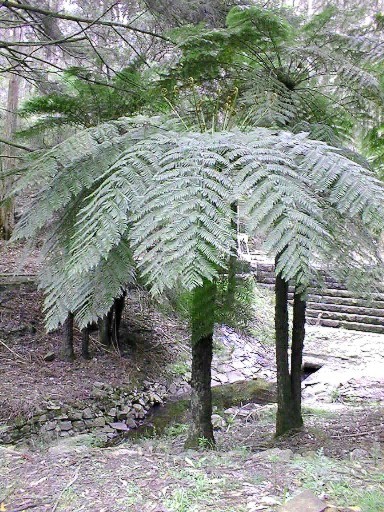
A closer view of Cyathea australis with the uncurling croziers visible. Photo courtesy of Scott Ridges.

Close-up of the uncurling croziers of Cyathea australis. Note the brown scales. Photo courtesy of Scott Ridges.
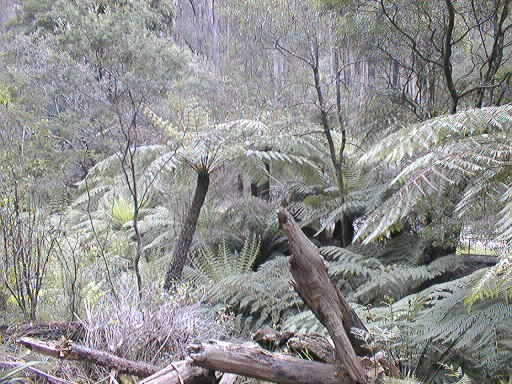
Cyathea australis in habitat, Victoria, Australia. Photo courtesy of Scott Ridges.
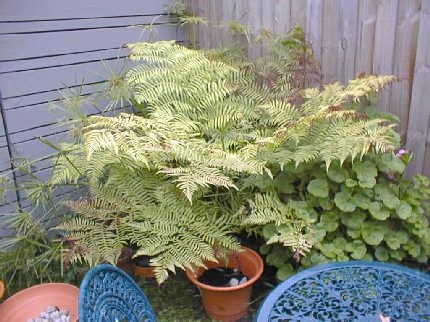
A young plant of Cyathea australis. Photo courtesy of Scott Ridges.
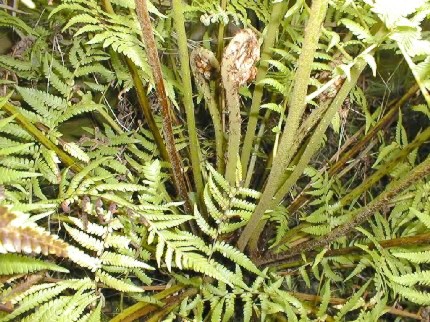
Looking into the crown of a young Cyathea australis. Photo courtesy of Scott Ridges.
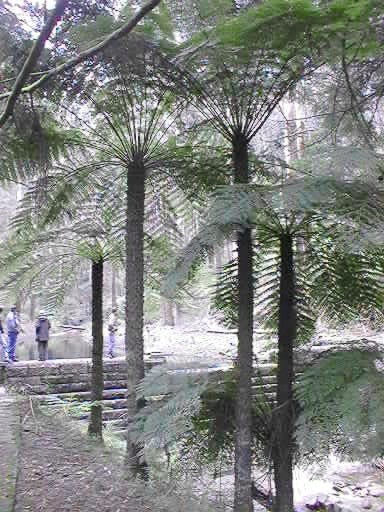
Cyathea australis. Photo courtesy of Scott Ridges.

Another large Cyathea australis in habitat, Victoria, Australia. Photo courtesy of Scott Ridges.
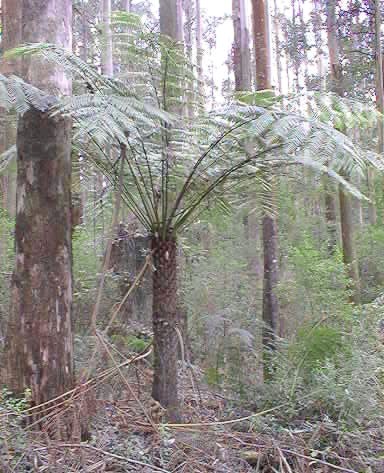
A very attractive specimen of Cyathea australis growing in habitat in eucalypt forest. Photo courtesy of Scott Ridges.

Sopreling of Cyathea australist. Photo by the author.
Other species of Cibotium (previous)
Cyathea brownii (next)
Back to Cyathea